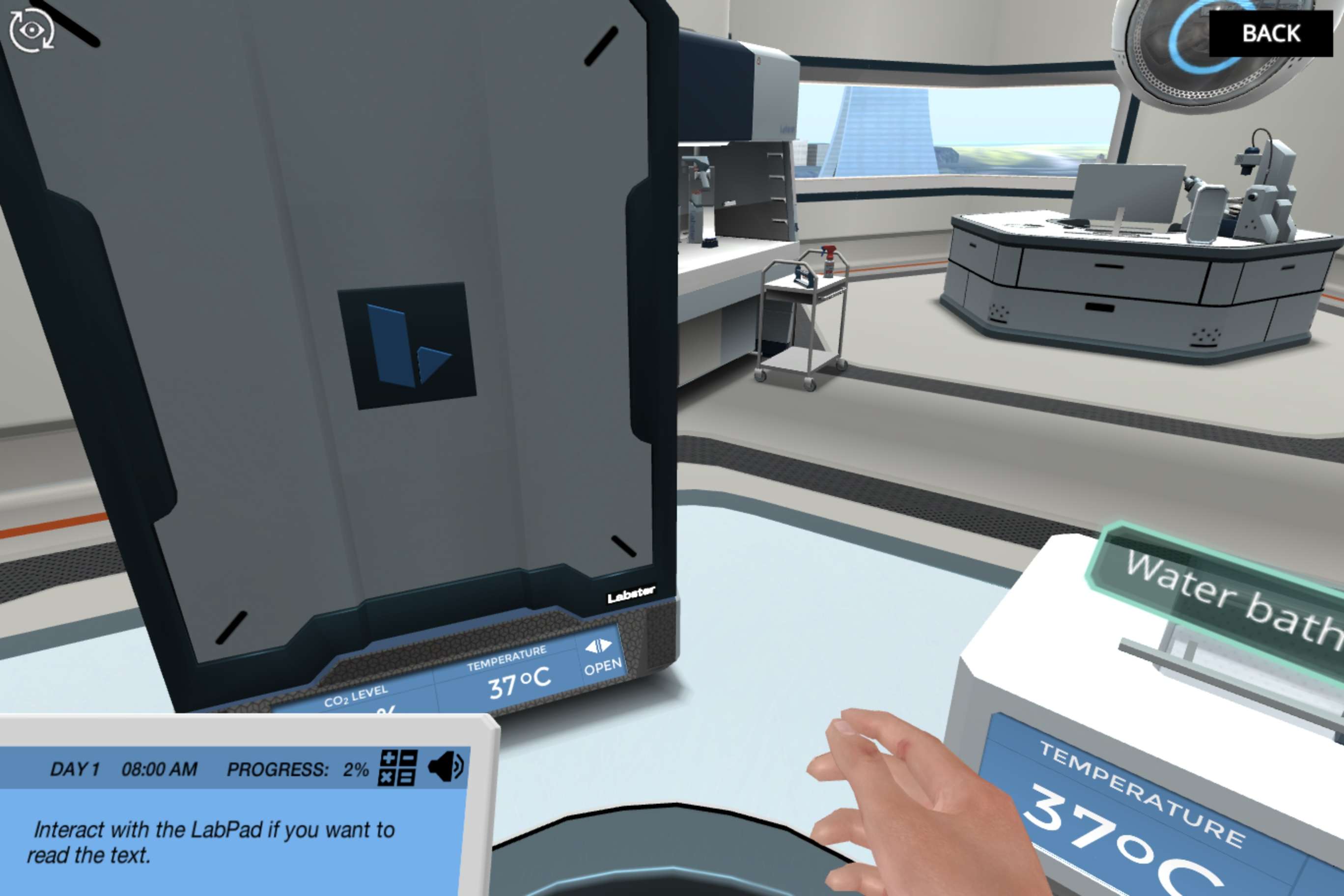Heading 1
Heading 2
Heading 3
Heading 4
Heading 5
Heading 6
Lorem ipsum dolor sit amet, consectetur adipiscing elit, sed do eiusmod tempor incididunt ut labore et dolore magna aliqua. Ut enim ad minim veniam, quis nostrud exercitation ullamco laboris nisi ut aliquip ex ea commodo consequat. Duis aute irure dolor in reprehenderit in voluptate velit esse cillum dolore eu fugiat nulla pariatur.
Block quote
Ordered list
- Item 1
- Item 2
- Item 3
Unordered list
- Item A
- Item B
- Item C
Bold text
Emphasis
Superscript
Subscript
About This Simulation
Find out what it’s like to work in a cell culture laboratory. Learn how to use the aseptic technique to avoid contamination of your cells, and discover what it takes to keep them alive.
Learning Objectives
- Apply the aseptic technique and other good laboratory practices in a cell culture lab
- Describe the minimum requirements to have an adequate cell environment that supports cell growth
- Describe and perform the key steps when working with mammalian cells in vitro: thawing and plating; cell passaging; cell cryopreservation
- Correctly use a biosafety cabinet and an automated cell counter
About This Simulation
Lab Techniques
- Cell counting
- Cell passaging
- Cell culture
- Cell cryopreservation
Related Standards
- No direct alignment
- No direct alignment
- No direct alignment
Learn More About This Simulation
Did you know there are approximately 37 trillion cells in your body? In the Cell Culture Basics simulation, you will learn how to culture cells in a controlled environment. You will perform the different steps to keep them healthy by using a standard cell culture protocol for eukaryotic cells. For this purpose, you will also learn the aseptic technique.
Provide an extra vial of cells
In the Cell Culture Basics simulation, your lab assistant, Dr. One, is working on finding promising treatments for skin cancer. She is performing an experiment where she is using fibroblasts, but to complete the experiment, she needs more cells. Your goal is therefore to help her with the cell culture to grow more cells and store a vial for future tests.
Perform a cell culture passage
During the Cell Culture Basics lab, you will learn what the ideal physical and chemical conditions to grow eukaryotic cells are. You will also prepare the reagents needed to support the growth of cells. You will work in a biosafety cabinet and discover how to use the aseptic technique to avoid any undesired contamination in your cell culture.
Watch your cells grow—fast
Unlike in a real lab, you don’t need to wait for hours and hours to see how the fibroblasts you seed will grow. Instead, in this virtual simulation, you can fast-forward the process and make it grow in just a couple of seconds! You can use a phase contrast microscope to visualize your cell culture and identify different cell morphologies. When your cells have reached the desired growth, you will use trypsin to unravel the secrets of a cell culture passage.
Analyze cell viability and freeze cells
As your final task in the Cell Culture Basics simulation, you will analyze the viability of your cell culture using the Trypan blue exclusion stain and an automatic cell counter. After that, you will prepare a new vial of cells to be cryopreserved using DMSO as a cryopreservation agent.
Will you be able to provide a vial of healthy cells for the cancer research experiments?
Experience Labster for Yourself
Boost Learning with Fun
75% of students show high engagement and improved grades with Labster
Discover Simulations That Match Your Syllabus
Easily bolster your learning objectives with relevant, interactive content
Place Students in the Shoes of Real Scientists
Practice a lab procedure or visualize theory through narrative-driven scenarios


For Science Programs Providing a Learning Advantage
FAQs
Find answers to frequently asked questions.
Heading 1
Heading 2
Heading 3
Heading 4
Heading 5
Heading 6
Lorem ipsum dolor sit amet, consectetur adipiscing elit, sed do eiusmod tempor incididunt ut labore et dolore magna aliqua. Ut enim ad minim veniam, quis nostrud exercitation ullamco laboris nisi ut aliquip ex ea commodo consequat. Duis aute irure dolor in reprehenderit in voluptate velit esse cillum dolore eu fugiat nulla pariatur.
Block quote
Ordered list
- Item 1
- Item 2
- Item 3
Unordered list
- Item A
- Item B
- Item C
Bold text
Emphasis
Superscript
Subscript
Labster can be integrated within a school's LMS (Learning Management System), and students can access it like any other assignment in their LMS. If your Institution does not choose an LMS integration, students will log in to Labster's Course Manager once they have an account created. Your institution will decide the access method during the sales process.
Labster is only available for purchase by faculty and administration at academic institutions. To procure Labster, simply reach out to us on our website. Schedule a demo, book a meeting to discuss pricing, start a free trial, or simply fill out our contact form.
Labster simulations are created by real scientists and designed with unparalleled interactivity. Unlike point and click competitors, Labster simulations immerse students and encourage mastery through active learning.
Labster supports a wide range of courses at the high school and university level across fields in biology, chemistry and physics. Some simulations mimic lab procedures with high fidelity to train foundational skills, while others are meant to bring theory to life through interactive scenarios.


















